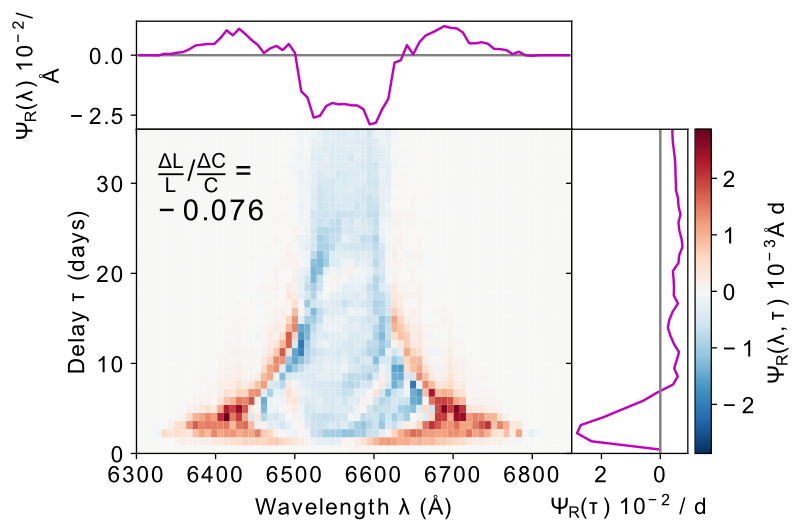

Core Complex Systems Research
The theory, tools, methodologies and conceptual frameworks fundamental to complex systems simulation are research topics in their own right. What constitutes complexity? How should systems complexity be measured and characterised? How can simulation methods best augment mathematical modelling?
 Domain Visualisation Examples
Domain Visualisation Examples
Complexity
We add to successive waves of research attempting to formulate, reformulate and ultimately answer questions such as: what distinguishes complex systems? What processes produce or maintain complex systems? How is complexity related to evolution, adaptation, agency, and cognition? How can emergence and self-organisation aid science?
Key Contact
- Massimo Stella
- Ed Butler
- George Callender
Thesis: Modelling Partial Discharge in Gaseous Voids - George Callender
Thesis: The Global Meridional Overturning Circulation's Response to Variable Buoyancy Forcing - Ed Butler
Thesis: Network Structure and Dynamics of Empirical Multiplex Systems - Massimo Stella
 Interactions are important, since they can influence and shape a variety of real-world networked systems. Interactions can have a multi-relational nature, i.e. being of different type. Different layers of interactions can look very different from each other, motivating the need for developing multi-layer network models and metrics in network science. This thesis aims at developing novel multiplex frameworks for the quantitative investigation of two real-world systems: (i) the web of relationships between words in the human mind and (ii) the ecological interactions among animals in ecosystems. Despite being different in nature, both the mental lexicon of words and ecosystems can be represented as a multiplex network, where nodes represent distinct entities (e.g. words or animal groups) interacting on different layers in different ways (e.g. words being semantically and/or phonologically similar; animal species eating or parasitising each other). In both the considered systems, interactions crucially determine function and dynamics of a variety of processes. In the mental lexicon, individual interactions have been shown to influence both language acquisition and usage.
Interactions are important, since they can influence and shape a variety of real-world networked systems. Interactions can have a multi-relational nature, i.e. being of different type. Different layers of interactions can look very different from each other, motivating the need for developing multi-layer network models and metrics in network science. This thesis aims at developing novel multiplex frameworks for the quantitative investigation of two real-world systems: (i) the web of relationships between words in the human mind and (ii) the ecological interactions among animals in ecosystems. Despite being different in nature, both the mental lexicon of words and ecosystems can be represented as a multiplex network, where nodes represent distinct entities (e.g. words or animal groups) interacting on different layers in different ways (e.g. words being semantically and/or phonologically similar; animal species eating or parasitising each other). In both the considered systems, interactions crucially determine function and dynamics of a variety of processes. In the mental lexicon, individual interactions have been shown to influence both language acquisition and usage.
- Numerical instabilities and three-dimensional electromagnetic articulography M Stella, P Bernardini, F Sigona, A Stella, M Grimaldi, B Gili Fivela The Journal of the Acoustical Society of America 132 (6), 3941-3949
- Multiplex lexical networks reveal patterns in early word acquisition in children M Stella, NM Beckage, M Brede, Scientific Reports 7, 46730
- Patterns in the English language: phonological networks, percolation and assembly models M Stella, M Brede, Journal of Statistical Mechanics: Theory and Experiment 2015 (5), P05006
- Multiplex model of mental lexicon reveals explosive learning in humans M Stella, NM Beckage, M Brede, M De Domenico Scientific reports 8 (1), 2259
- Parasite spreading in spatial ecological multiplex networks M Stella, CS Andreazzi, S Selakovic, A Goudarzi, A Antonioni Journal of Complex Networks 5 (3), 486-511
Mathematics and Statistics
As with any other scientific enterprise, mathematical tools, formalisms, and analysis are central building blocks for making progress.
Key Contact
- Sonya Ridden
- Sam Mangham
- Aleksas Stuikys
Thesis: The Reverberation Signatures of Accretion Disk Winds in Active Galactic Nuclei - Sam Mangham
 Most galaxies have at their centre a super-massive black hole. In 'Active Galactic Nuclei', otherwise known as Quasars, these black holes devour huge quantities of matter. As it falls in, this matter releases huge quantities of energy, and quasars are the brightest objects in the universe. A quasar can outshine its host galaxy by a factor of 100. The regions emitting this light are, however, so small (and the quasars so distant) that they appear as a single point on the sky with even the most powerful of telescopes.
Most galaxies have at their centre a super-massive black hole. In 'Active Galactic Nuclei', otherwise known as Quasars, these black holes devour huge quantities of matter. As it falls in, this matter releases huge quantities of energy, and quasars are the brightest objects in the universe. A quasar can outshine its host galaxy by a factor of 100. The regions emitting this light are, however, so small (and the quasars so distant) that they appear as a single point on the sky with even the most powerful of telescopes. Reverberation Map Instead, we can investigate these regions using 'reverberation mapping', i.e., using the time delays as pulses of light emitted by material falling into the quasar something like radar or sonar. My work involved producing high-detail simulations to predict the reverberation mapping signatures observed for a range of potential AGN models.
Reverberation Map Instead, we can investigate these regions using 'reverberation mapping', i.e., using the time delays as pulses of light emitted by material falling into the quasar something like radar or sonar. My work involved producing high-detail simulations to predict the reverberation mapping signatures observed for a range of potential AGN models.
Thesis: Stochastic Models of Stem Cell Dynamics - Sonya Ridden
Thesis: Electromagnetic Modelling of Switched Reluctance Machines Exploiting Flux Tubes - Aleksas Stuikys
Systems Design and Optimisation
Value-Driven design research targets the design and development process itself, developing new multidisciplinary tools, approaches and insights by modelling how the "eco-system" of prime contractors, international supply chains, governments, customers and could best interact. In this way, "value" metrics that trade-off, e.g., product performance, noise, emissions, cost, maintainability, flexibility, are modelled and understood to optimise systems holistically.
Key Contacts
- Ben Schumann
Thesis: Life-cycle Simulation for Early Aerospace Design: how small design decisions can have a large impact
I build real world systems as virtual worlds and test hypothesis in this safe space. The focus is on physical process-based systems such as supply chains, warehouses, logistics, etc. Whenever things move, interact and exhibit complex (hard to analyse) behavior, I can provide valuable insights through dynamic, interactive and visual models.
- Evaluating design decisions in real-time using operations modelling B Schumann, J Scanlan, K Takeda, ATOS Air Transport and Operations Symposium
- A Generic Operational Simulation for Early Design Civil Unmanned Aerial Vehicles B Schumann, JP Scanlan, K Takeda SIMUL 2011, The Third International Conference on Advances in System
- Better design decisions through operational modeling during the early design phases, B Schumann, M Ferraro, A Surendra, JP Scanlan, H Fangohr, Journal of Aerospace Information Systems 11 (4), 195-210
Simulation
While simulation modelling is as old as computational machinery, the availability of cheap computational power increases, the importance of simulation. Therefore, we research for effective, efficient, robust and explanatory simulation methodologies to exploit this power, e.g., GPU computing.
Key Contact
- Robin Wilson
- Nick Synes
- Dmitri Chernyshenko
- Mark Vousden
Thesis: Developing a Novel Method to Retrieve High Spatial Resolution Aerosol Optical Thickness (AOT) from Satellite Data - Robin Wilson
Thesis: Spatial Methods for Modelling Species Distributions - Nick Synes
Thesis: Computational Methods in Micromagnetics - Dmitri Chernyshenko
Thesis: Magnetic Skyrmion Research Using Virtual Simulation Environments - Mark Vousden
Thesis: Simulating Sleeping Sickness : A Multi-Host Agent-Based Model - Simon Alderton

